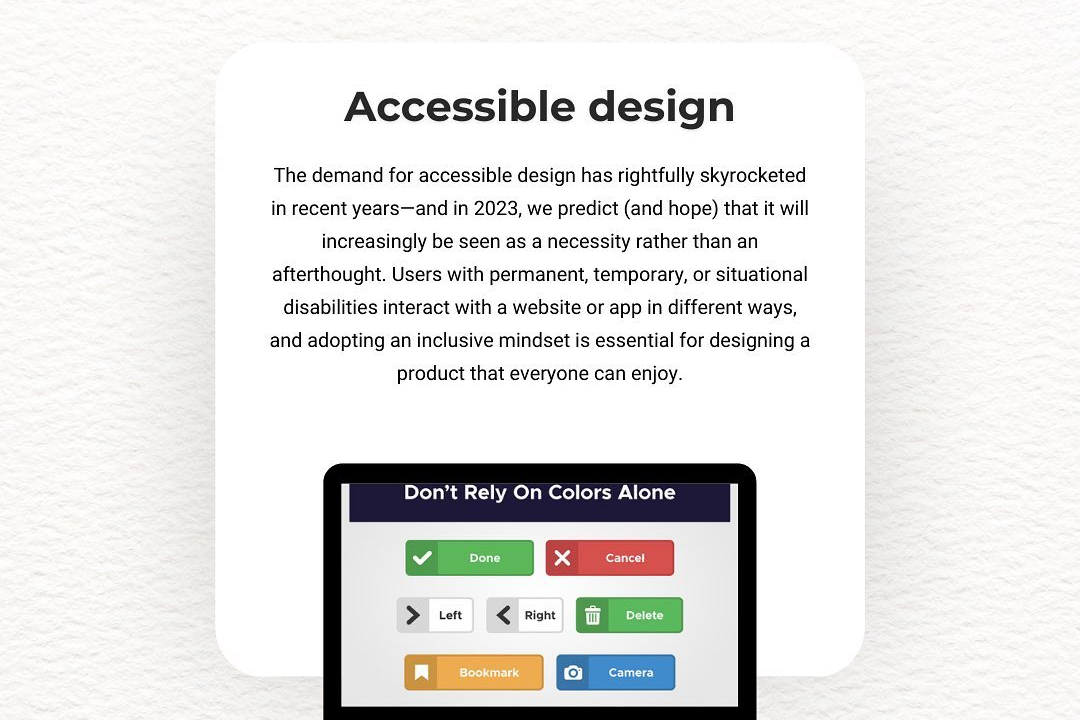How Check Leap Year Program in PHP
A leap year check program in PHP is used to determine whether a given year is a leap year or not. Le
How Check Leap Year Program in PHP
A leap year check program in PHP is useful for ensuring date calculations and scheduling functions are accurate, especially in applications that involve calendar management, event planning, or age calculation. By correctly identifying leap years, developers can prevent errors related to date discrepancies and ensure that features like birthdate validation, financial calculations, or event reminders remain precise. Implementing a leap year check in PHP involves simple conditional logic to verify if a year is divisible by 4, but not by 100 unless it’s also divisible by 400, enabling your application to handle dates correctly across different calendar years.
To Download Our Brochure: https://www.justacademy.co/download-brochure-for-free
Message us for more information: +91 9987184296
A leap year check program in PHP is useful for ensuring date calculations and scheduling functions are accurate, especially in applications that involve calendar management, event planning, or age calculation. By correctly identifying leap years, developers can prevent errors related to date discrepancies and ensure that features like birthdate validation, financial calculations, or event reminders remain precise. Implementing a leap year check in PHP involves simple conditional logic to verify if a year is divisible by 4, but not by 100 unless it’s also divisible by 400, enabling your application to handle dates correctly across different calendar years.
Course Overview
This course teaches you how to efficiently check for leap years in PHP, covering essential date logic and coding techniques to ensure accurate year validation for your applications.
Course Description
Learn how to determine leap years in PHP with this concise course, covering key date calculations and coding methods to accurately identify leap years for your projects.
Key Features
1 - Comprehensive Tool Coverage: Provides hands-on training with a range of industry-standard testing tools, including Selenium, JIRA, LoadRunner, and TestRail.
2) Practical Exercises: Features real-world exercises and case studies to apply tools in various testing scenarios.
3) Interactive Learning: Includes interactive sessions with industry experts for personalized feedback and guidance.
4) Detailed Tutorials: Offers extensive tutorials and documentation on tool functionalities and best practices.
5) Advanced Techniques: Covers both fundamental and advanced techniques for using testing tools effectively.
6) Data Visualization: Integrates tools for visualizing test metrics and results, enhancing data interpretation and decision-making.
7) Tool Integration: Teaches how to integrate testing tools into the software development lifecycle for streamlined workflows.
8) Project-Based Learning: Focuses on project-based learning to build practical skills and create a portfolio of completed tasks.
9) Career Support: Provides resources and support for applying learned skills to real-world job scenarios, including resume building and interview preparation.
10) Up-to-Date Content: Ensures that course materials reflect the latest industry standards and tool updates.
Benefits of taking our course
Functional Tools
1 - PHP IDEs and Code Editors: Students are introduced to popular integrated development environments like Visual Studio Code, PHPStorm, or Sublime Text that facilitate writing, debugging, and testing PHP scripts efficiently. These tools provide syntax highlighting, code completion, and error detection, making the development process smoother. Learning to navigate and utilize IDE features enhances productivity and helps students develop clean, error free code when implementing leap year logic and other date related programs. The course demonstrates best practices for setting up these tools, installing necessary plugins, and organizing project files for optimal workflow, ensuring learners can work confidently on real world PHP projects.
2) PHP Development Environment Setup: The course trains students on configuring local web servers such as XAMPP, WAMP, or MAMP that allow running PHP scripts locally, mimicking real hosting environments. Setting up a local server is essential for testing leap year programs as students can simulate different input scenarios, debug code, and observe output in a controlled environment. Clear instructions are provided on configuring server parameters, creating project directories, and managing database connections if needed. Familiarity with these environments helps students understand the deployment process and ensures they can transition their code from development to production seamlessly.
3) PHP Command Line Interface (CLI): Students learn to run PHP scripts directly from the terminal or command prompt, which is valuable for quick testing and scripting tasks related to leap year calculations. Using CLI tools enhances efficiency, especially when testing various input cases without setting up a full web interface. The course covers basic commands, script execution, and debugging techniques using CLI, enabling students to handle batch processing or automation of leap year checks in larger applications or during data processing tasks.
4) Version Control Tools – Git: The course emphasizes using Git to manage code changes, collaborate on projects, and maintain version history throughout the development of leap year programs. Students are guided on repositories, branching strategies, and best practices for committing, pushing, and pulling code updates. Familiarity with version control ensures they can work collaboratively, revert to previous versions if bugs are introduced, and document their development process effectively. This foundational skill is crucial for professional development and project management in real world scenarios.
5) PHP Documentation and Online Resources: Students are trained to navigate official PHP documentation to understand built in functions like `checkdate()` and other date related utilities that simplify leap year verification. The course encourages leveraging community forums, tutorials, and Stack Overflow for troubleshooting and learning advanced tips. Using authoritative resources enhances learners' problem solving capabilities, enabling them to independently find solutions, optimize their code, and stay updated with new features or best practices in PHP development.
6) Debugging and Testing Tools: The course introduces debugging plugins and tools integrated into IDEs or as standalone applications, such as Xdebug or PHP Debug Bar. These tools assist students in identifying logical errors, tracking variable values, and stepping through their leap year scripts to ensure correctness. Effective debugging strategies are vital for developing reliable programs, especially when handling edge cases like century years or leap year exceptions. Students learn to write comprehensive test cases, automate testing processes, and validate their programs thoroughly before deployment.
7) Web Browser Developer Tools: Students also explore browser tools like Chrome DevTools to inspect PHP generated HTML outputs, monitor network requests, and debug client side scripts that interact with leap year programs. While PHP runs server side, understanding how output displays and interacts with front end components strengthens overall application development skills. These tools help verify that the leap year logic integrates properly within web applications, ensures data validation, and provides a smooth user experience.
8) Database Management Systems (if applicable): If the program involves storing date data or user inputs, students are shown how to use MySQL or other databases to manage date related records effectively. Training includes connecting PHP scripts with databases, performing CRUD operations, and querying date data to verify leap years within stored datasets. This integration teaches learners about data persistence, security considerations, and efficient data handling relevant to real time applications that check leap years based on stored user data.
9) Containerization and Virtualization Tools: The course introduces Docker and similar container platform concepts to create isolated development environments for PHP projects. This ensures consistency across different systems and simplifies dependencies management when developing leap year programs, especially in team settings. Students learn to containerize their PHP applications, making deployment straightforward and reducing environment related issues, which is essential for scalable project development and testing.
10) Continuous Integration/Continuous Deployment (CI/CD) Tools: Learners are exposed to CI/CD pipelines using platforms like Jenkins, GitHub Actions, or GitLab CI to automate testing and deployment of PHP applications that include leap year functionality. Automating validation processes ensures that code changes do not break existing features, promotes robust testing of date logic, and expedites deployment cycles, preparing students for professional environments where automation enhances efficiency and reliability.
11 - API Development and Testing Tools: The course covers creating and testing PHP based APIs using tools like Postman or Insomnia. This allows students to develop APIs that can provide leap year validation as a service for other applications, demonstrating how to handle request/response cycles, validate data, and document endpoints. Building such APIs familiarizes learners with REST principles, enhances their understanding of data interchange, and prepares them for integration projects.
12) Performance Profiling and Optimization Tools: Students learn to use tools like Xdebug profiler or Blackfire to analyze the performance of their leap year programs. Identifying bottlenecks and optimizing code ensures that date validation functions execute efficiently, especially in large scale applications with high traffic. Understanding this aspect helps in writing scalable, fast, and resource friendly code, which is critical in production settings.
13) Front End Development and Integration: The course touches upon basic HTML, CSS, and JavaScript to build user interfaces that interact with PHP leap year scripts. Incorporating front end frameworks or libraries like Bootstrap or Vue.js enhances user experience by providing intuitive input forms and dynamic feedback about leap year status. This integration teaches full stack development fundamentals, enabling students to create complete, user friendly applications.
14) Security Tools and Practices: Students are introduced to security measures such as input validation, sanitization, and secure data handling to prevent common vulnerabilities like SQL injection or cross site scripting (XSS). Ensuring secure coding practices when inputting dates or other data related to leap year calculations protects applications from malicious attacks. This foundational knowledge is crucial for developing reliable and trustworthy software solutions.
15) Cloud Service Platforms: The course explores deployment of PHP applications on cloud platforms such as AWS, Azure, or Google Cloud. Students learn how to set up virtual servers, configure environment variables, and deploy their leap year programs at scale. Cloud deployment skills facilitate real time application management, scalability, and accessibility, preparing learners for enterprise level projects.
16) Automated Backup and Recovery Tools: Learning how to implement automated backups of code repositories, databases, or server configurations ensures project integrity and disaster recovery. For applications dealing with date related data or user inputs, maintaining data security through reliable backup strategies is essential, especially as projects expand or go live.
17) Learning Management Systems (LMS) Integration: The course is designed to integrate with LMS platforms where learners can track their progress, submit assignments, and access additional resources. This structured approach supports self paced learning and helps students consolidate their understanding of tools and best practices while developing leap year programs.
18) Collaboration and Communication Tools: Introduction to platforms like Slack, Trello, or Microsoft Teams for project collaboration, task management, and code sharing. These tools foster teamwork, especially in larger projects involving multiple developers working on leap year verification systems, emphasizing professional collaboration skills.
19) Data Visualization Tools: Incorporating libraries or tools such as Chart.js or Google Charts to visually represent date data, leap year frequency, or related statistics. Visual aids enhance comprehension, especially for understanding patterns or anomalies in date calculations, and help present results to stakeholders clearly.
20) Certification and Portfolio Development: Guidance on creating a comprehensive portfolio of projects, including their leap year programs, documentation, and test cases. Building a strong portfolio demonstrates proficiency to employers and showcases practical skills in PHP development, environment management, and project deployment.
Browse our course links : https://www.justacademy.co/all-courses
To Join our FREE DEMO Session:
This information is sourced from JustAcademy
Contact Info:
Roshan Chaturvedi
Message us on Whatsapp:
Email id: info@justacademy.co
Xamarin Vs Flutter Vs React Native 2019
Advanced Php Programming Book Free Download












